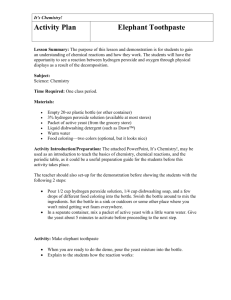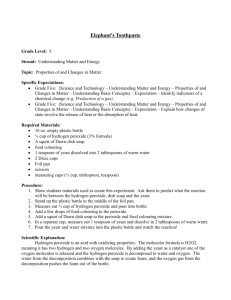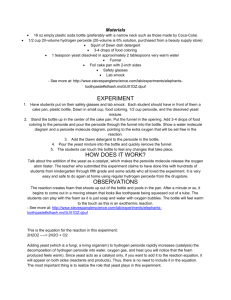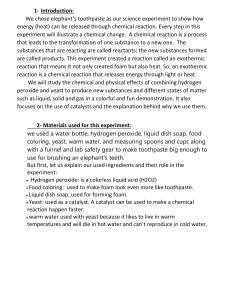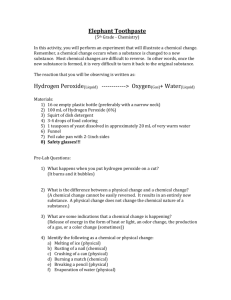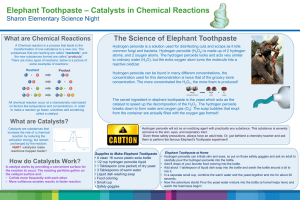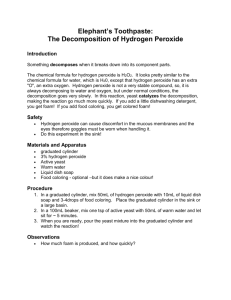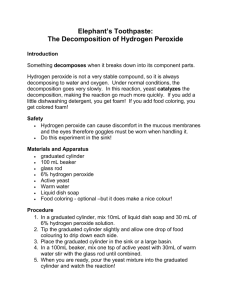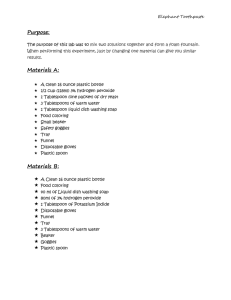Elephant Toothpaste for Kids
advertisement
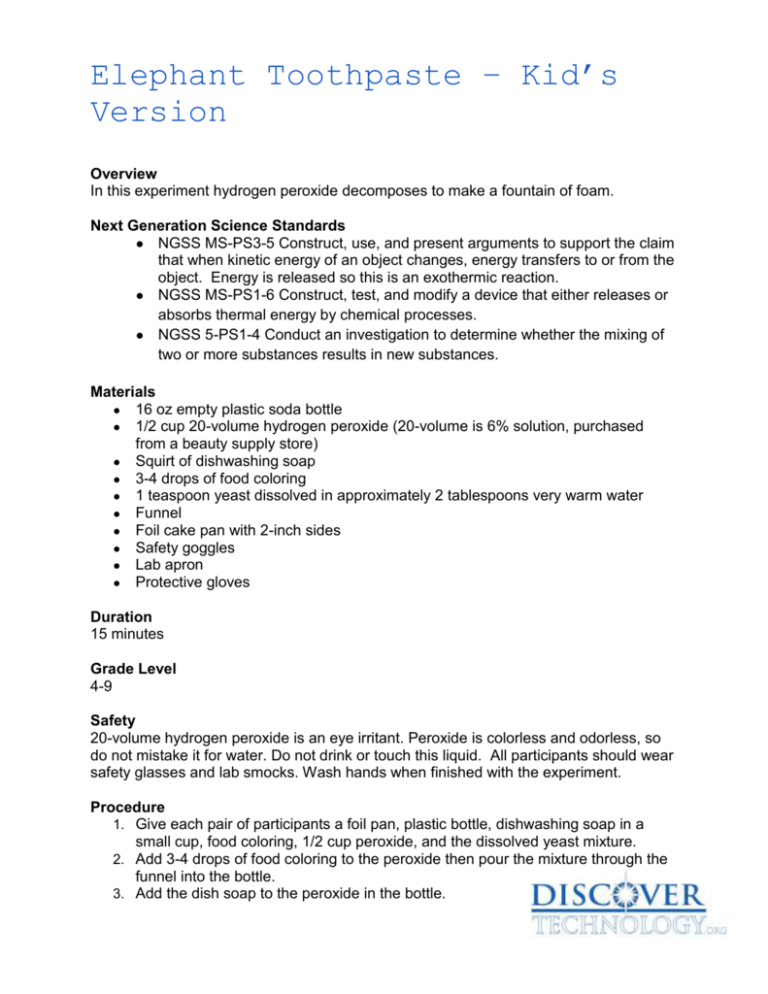
Elephant Toothpaste – Kid’s Version Overview In this experiment hydrogen peroxide decomposes to make a fountain of foam. Next Generation Science Standards ● NGSS MS-PS3-5 Construct, use, and present arguments to support the claim that when kinetic energy of an object changes, energy transfers to or from the object. Energy is released so this is an exothermic reaction. ● NGSS MS-PS1-6 Construct, test, and modify a device that either releases or absorbs thermal energy by chemical processes. ● NGSS 5-PS1-4 Conduct an investigation to determine whether the mixing of two or more substances results in new substances. Materials ● 16 oz empty plastic soda bottle ● 1/2 cup 20-volume hydrogen peroxide (20-volume is 6% solution, purchased from a beauty supply store) ● Squirt of dishwashing soap ● 3-4 drops of food coloring ● 1 teaspoon yeast dissolved in approximately 2 tablespoons very warm water ● Funnel ● Foil cake pan with 2-inch sides ● Safety goggles ● Lab apron ● Protective gloves Duration 15 minutes Grade Level 4-9 Safety 20-volume hydrogen peroxide is an eye irritant. Peroxide is colorless and odorless, so do not mistake it for water. Do not drink or touch this liquid. All participants should wear safety glasses and lab smocks. Wash hands when finished with the experiment. Procedure 1. Give each pair of participants a foil pan, plastic bottle, dishwashing soap in a small cup, food coloring, 1/2 cup peroxide, and the dissolved yeast mixture. 2. Add 3-4 drops of food coloring to the peroxide then pour the mixture through the funnel into the bottle. 3. Add the dish soap to the peroxide in the bottle. 4. Pour the yeast mixture into the bottle and quickly remove the funnel. Observations Common indicators of chemical reaction 1. Color change 2. Increase or decrease in temperature 3. Gas or bubble production 4. Precipitation (liquids react to make a solid) 5. Change in properties such as odor, hardness, density after the reaction begins Which of the five common indicators of a chemical reaction were noticeable during this experiment? It is safe to touch the bottle to feel any change in temperature. It is even safe to touch the foam because it is soap and water with oxygen bubbles. How does it work? The reaction creates foam that shoots out of the bottle and pools in the pan. After a minute or so, it begins to come out in a moving stream that looks like toothpaste being squeezed out of a tube. The bottle will feel warm to the touch because the reaction is exothermic. Chemical potential energy is transformed to thermal energy and the energy of motion. Hydrogen peroxide naturally decomposes into oxygen and hydrogen gas according to this equation. H2O2(aq)→H2 (g) + O2(g) Yeast acts as a catalyst, which makes the peroxide molecule decompose much more quickly than it would naturally.

